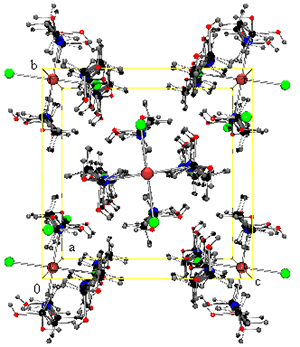Frank W. Heinemann,a Živadin D. Bugarčić (1954–2017),b and Tanja V. Soldatovićc@
aDepartment of Chemistry and Pharmacy, Friedrich-Alexander-University of Erlangen-Nürnberg, 91058 Erlangen, Germany
bDepartment of Chemistry, Faculty of Science, University of Kragujevac,34000 Kragujevac, Serbia
cDepartment of Chemical-Technological Sciences, State University of Novi Pazar, 36300 Novi Pazar, Serbia
DOI: 10.6060/mhc200389s
Macroheterocycles 2020 13 (3) 210-214
The crystal structures of trans-diiodidobis(2-hydroxyethylamine)platinum(II), trans-[PtI2(mea)2], (1) and trans-dichloridobis(2,2’-dihydroxydiethylamine)platinum(II), trans-[PtCl2(dea)2], (2) were determined by single crystal X-ray diffraction experiments. Crystallization of (1) occurs in the monoclinic space group P21/c with a = 9.457(1)Å, b = 14.719(2) Å, c = 8.246(1) Å, Z = 4 for dcalc = 3.235 mg/m3 while crystallization of (2) occurs in the tetragonal space group P42/mbc, a = 9.8624(6) Å, c = 14.2998(9) Å, Z = 4 for dcalc = 2.274 mg/m3. The square-planar coordination geometry of both complexes is formed by two N atoms of the 2-hydroxyethylamine (1) or 2,2’-dihydroxydiethylamine (2) ligands in trans positions and two I- (1) or Cl- (2)anions. Both structures are stabilized by intra- and intermolecular hydrogen bonds.

References:
